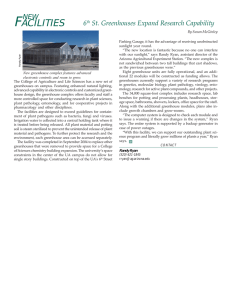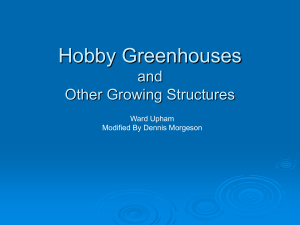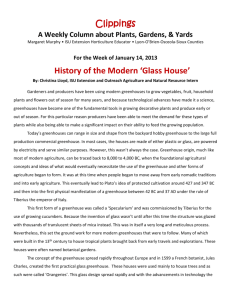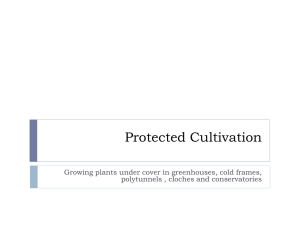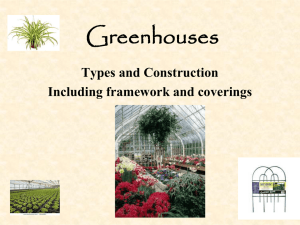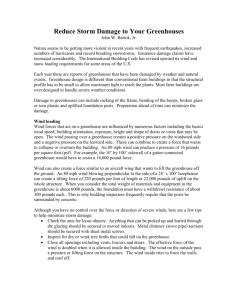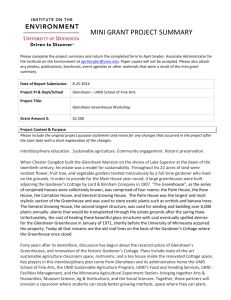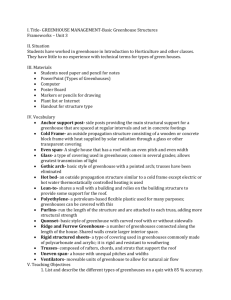Green- Houses
advertisement
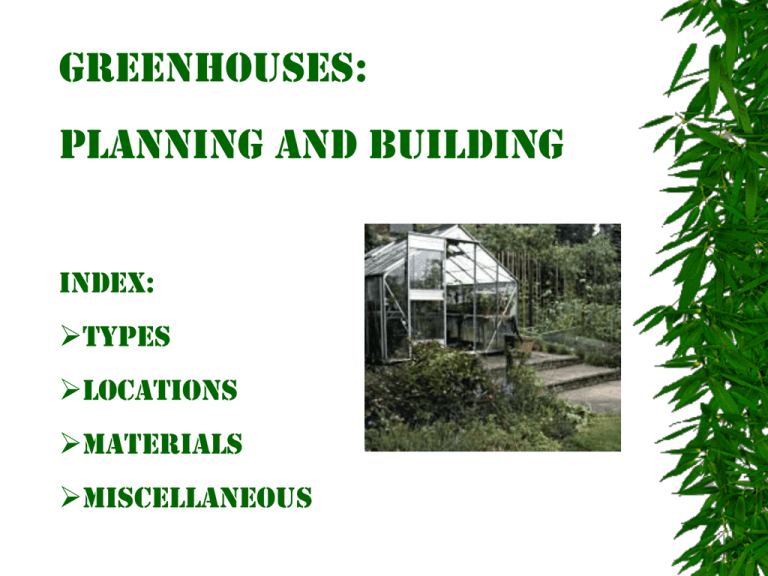
Greenhouses: Planning and Building Index: Types Locations Materials Miscellaneous Types of Greenhouses: I. Attached 1. half-size a. Lean-to Structure 2. Full Size a. Evan Span Structure 3. Extended Window A. Window Mounted II. Free-Standing Locations Greenhouses should be located in order to receive maximum sunlight. A greenhouse should be located on any side of a major structure except the North side. Deciduous trees should be placed strategically around the greenhouse to shade from the intense afternoon sun, but do not shade the house in the morning. Access to greenhouse should be convenient for utilities as well as people. A separate storage area should be set aside for supplies, as well as a workplace for potting plants, etc… Materials The key in any greenhouse is the frame. Frames can be built with aluminum, wood, or galvanized steel. Plastic pipe materials are only appropriate in some climates, due to the fact that this material does not meet some wind and snow load requirements. Below are some basic frames: Coverings Glass: A traditional covering for greenhouses, glass is functional and nice looking. It is easily maintained and also keeps a high level of humidity in. Tempered glass is often stronger than regular glass and is frequently used as well. Fiberglass: A good grade of fiberglass will not weather or discolor and is also hail-proof. If treated with a Tedlar coating, fiberglass will last 15-20 years without heavy maintenance. While fiberglass initially has the same light penetration as regular glass, it usually tends to drop off as time goes on. Double-wall plastic: Made of double layers of acrylic or polycarbonate sheets of plastic, double-wall plastic retains more heat than conventional coverings, bringing savings of 30% on energy costs. However, only 80% of light if filtered through this thicker covering as opposed to a 90% filtration of the regular glass. Key things to remember when building a greenhouse Greenhouses do not have to be expensive! If you don’t want to spend the money, don’t! The idea is to get as much light into the greenhouse as possible. Avoid covering the house with excess trees, coverings, etc… Don’t be afraid to break the mold! Each greenhouse should be unique. The sun can’t do it alone! Even though the sun provides most of the energy, you must regulate the environment of your greenhouse with fans, thermometers, heating and cooling, etc… Don’t forget the H2O! If the keeper will be gone frequently or the greenhouse is too vast to water by hand, a watering system will be necessary to maintain the plants.
